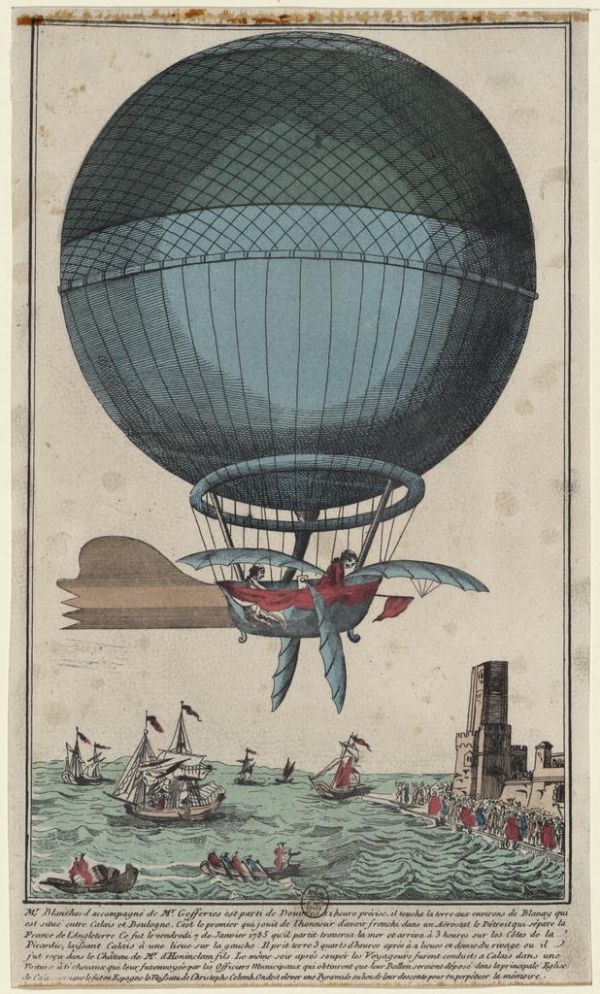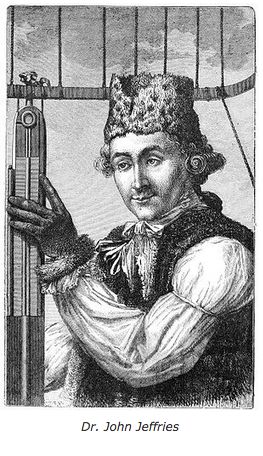
From our “Dustbin of History” files, here’s the harrowing tale of a little-known milestone in aviation history.
LOADED

It was January 7, 1785, and two men were preparing for the first ever balloon crossing of the English Channel.
The one who financed the adventure was John Jeffries, a well-to-do American doctor. The one with the aviation skills was Frenchman Jean-Pierre Blanchard, one of the innovators of ballooning -which at that point had only been around for two years. A crowd gathered near the Dover cliffs to watch them lift off for France. At 1:00 p.m., Blanchard and Jeffries embarked on their 21-mile journey. But there was one problem: They were too heavy.They were carrying 30 pounds of ballast weights (used to keep the balloon steady), plus steering gear, personal items, a bag of mail to be delivered in France, and scientific equipment. And then there were the four “wings.” Made out of silk and extending from the carriage, they served no real purpose except to make the balloon look like a bird.
CHANNEL SURFING

Only a few miles into the crossing, it was apparent that the balloon was flying too low. The Channel loomed close, and neither man could swim. Their only option: lose some weight.
First went the ballast bags, but the balloon didn’t rise. As the carriage skimmed 20 or so feet above the surface, Blanchard unhooked the wings and let them drop into the water. The men argued over what to throw off next, finally deciding on the bag of mail.
But the balloon was still flying too low. Then went the bottle of brandy they were saving for the landing. Still too low. Then, much to Jeffries’ dismay, went his thermometer, his barometer, and his telescope. Still too low.So Blanchard stripped off his clothes—his heavy overcoat, his pants and shirt, then everything else, and he urged Jeffries…
The post The Aero-Nuts of 1785 appeared first on FeedBox.